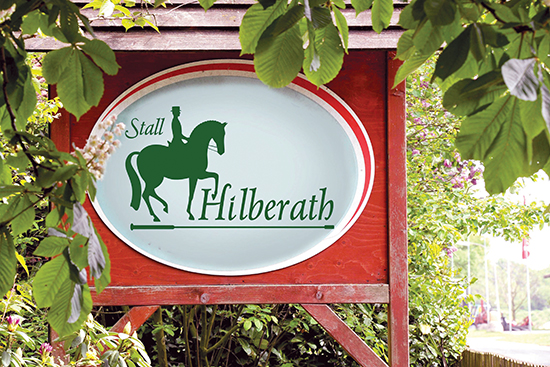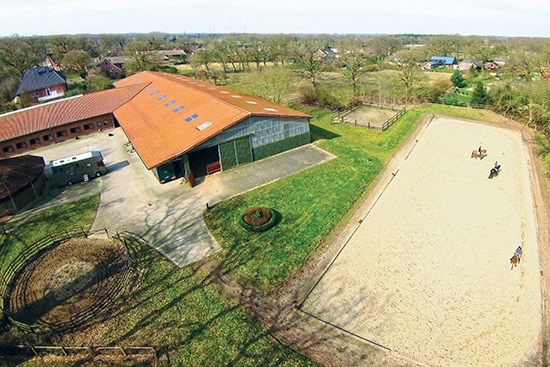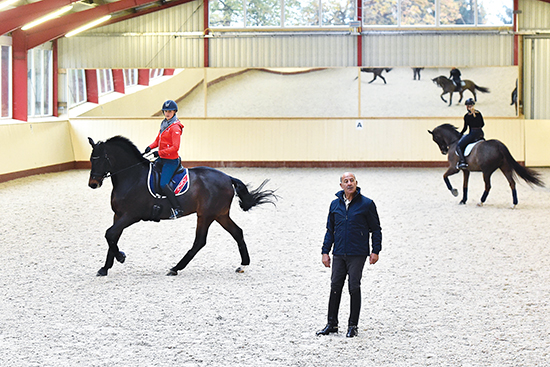 Interview by Christopher Hector and photos by Kiki Beeltiz
Interview by Christopher Hector and photos by Kiki Beeltiz
Jonny Hilberath is rightly one of Germany’s (the world’s) most respected dressage trainers. Jonny is an old fashioned horseman, coming from an all-round back ground in equestrian sport. Nowadays, he is a dressage specialist, and has just scaled back his activity with the German dressage team to concentrate on his growing clientele at his stables just near Bremen…
Jonny is a quietly spoken individual, but always with a warm smile, it is easy to see why riders like working with him…
You’ve stepped back a little in your rôle as German Dressage coach…
“Actually that was the plan from the beginning – when I took over after Holga Schmetzer passed away, I said, I’ll take the position as chief coach until the Olympics are finished, but it was from the beginning not possible for me to have my stables and my job at home, and the full-time job as the national coach. I am very happy to be able to work together with Monica Theodorescu, I think we work very well as a team.”
Your stables seem to have grown since I visited you last…
“I was always a yard with international clients, but in the last two years it got much more busy here with overseas riders.”
Even an Aussie…
“Yes, I have an Aussie, I have a New Zealand girl with an Aussie boyfriend, and I will get another New Zealand rider next year, I have Japanese and Americans, it is very busy.”
Do they come to you with different problems in their riding, or are people all over the world now more or less aware of the principles…
“In general the sport is growing much more together, there is not the big gap that we had before. Middle Europe used to rule the sport but it is now much more international which is very nice. Even when I see the rider from Australia, they have picked up so much in their riding and the quality of their horses. For sure when you come to a place like mine, some of the riders are a bit surprised that they have to go back quite a bit, down to the basics again, to get the horses correct, through and supple.”
Why is that so difficult, twenty years ago good trainers came to Australia and said, but you’ve got no basics, now twenty years later, good trainers come to Australia and say, you’ve got no basics…
“It’s not only in Australia a problem, in Germany and in Europe, it is still a problem, the way of thinking. Our horses nowadays have got so much better, even in the last ten years, so often it is very easy to teach them the tricks without going 100% step-by-step. But if you talk about international quality, about the performance in the ring at a championship, you will see that you can’t do the fifth step before you do the first step. Riders do have good horses, they can do in a way ‘the tricks’ but the riding and the performance of the horse, is often not that good.”
I thought we saw at Aachen in the European Championships with Charlotte Dujardin and Valegro, and Edward Gal and Undercover, two totally different styles of riding and training – one was forward and connected and flowing, the other looked totally manufactured by the rider…
“There are different systems I agree. I am not into what Charlotte and Carl or Edward are doing – I see what I see but I am not into their philosophy – the riding is different, but often it is the horse that makes you ride in a special way. You ride a horse that is hot and forward going differently from a horse that is a little laid back. But these two examples, Valegro and Undercover, show clearly that there are two different systems.”
Are they both dressage?
“Sure it’s dressage. It’s a way of training a horse that depends finally on the construction of the horse, that is the biggest problem. I don’t want to judge Edward’s riding, because personally I never thought this horse would become an international Grand Prix horse, that he finally got the horse to where he is now, is in a way, impressive. He has done a very good Grand Prix for example, and when you see a Grand Prix like that you have to say that it is good dressage, as a product, what you see in the ring.”
“I think actually that the training systems are in a way much more connected than they were before internationally. What we try to do in Germany is produce a horse which is able to bring all his movement and his energy forward, and that starts with the three year old and goes up to the Grand Prix, the horses understands to bring themselves into balance, it’s all about balance. A good example is Tina Sprehe and Desperados, there are not many horses in the sport that go through the test in such good self-carriage as Desperados. When you watch Tina sitting on the horse, it looks completely effortless and that is the result of our schooling. We try to make sure that the horses are not heavy down on the forehand and not behind our aids, we want the opposite, that the horses go in a natural uphill tendency, and that is the plan from the young horse on.”
read on
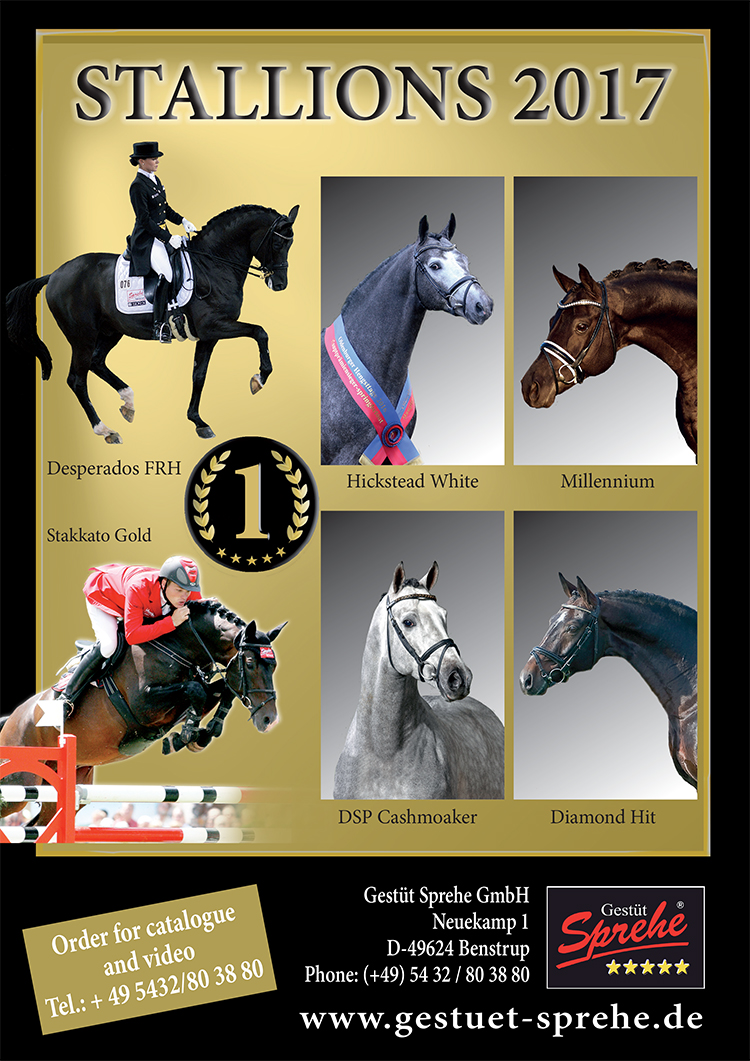
Desperados looked much stronger at the Europeans – has Monica been sending them out into that forest next to her stable?
“I think to make a top Grand Prix horse takes a long time, it is not ready when the horse does all the movements, a top Grand Prix horse is ready when the horse is an athlete and that it can take longer for some horses than others. You can see it is often between the age of 12 and 15, that the top horses make it – they need that time to carry out the plan and make it look easy. Often when you see seven or eight year old horses, and they start to play with the Grand Prix movements, then you imagine, next year he can do a Grand Prix – but when you try to ride the test, you realize that is not so easy, you have to help a lot to get the horse through the test. It takes a while before you can sit there and look pretty and smile. It’s the same in all sports, when it looks easy and light, that is perfection.”
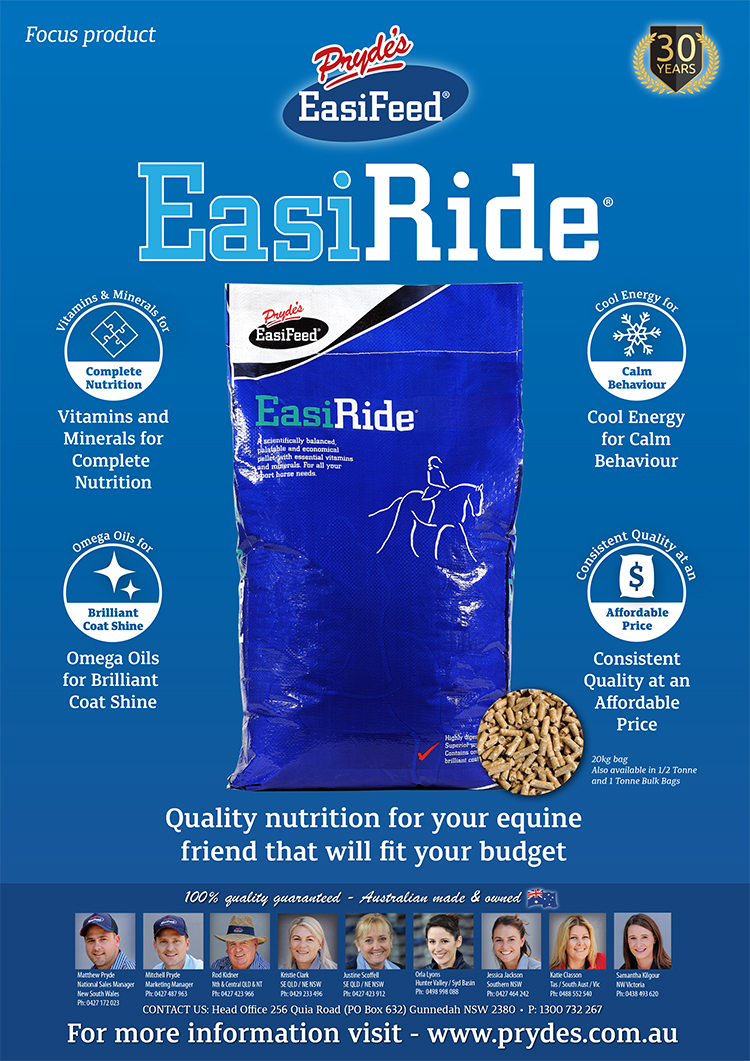
Do you do a lot of fitness work with your dressage horses?
“Yes. I just had a new outdoor built, 30 by 80, so we have a bit more space to gallop and exercise the horses. I do fitness plans for all of my horses, depending on the type of the horse, some horses are naturally more fit, more sparkling, more goee, and there are horses where you think in the beginning, he’s a bit laid back, he’s a little bit over-weight, but then through the fitness work, the horse turns, in their body but also in their mind. I think physical fitness in one of the keys for a good dressage horse. We can’t gallop are the fields near here, but we can walk and we can trot. The horses all go out at least twice a day – we have a walker and ride the horses, we lunge the horses, we have grass and sand paddocks, so we try to get them going.”
Do you have fitness programs for your riders?
“I try to. Our riders who are competing for Germany, they have to go through fitness tests. Most of them nowadays, especially the younger generation like Tina and Jessica, they have their own fitness programs, and their diet is very healthy, they are very aware.”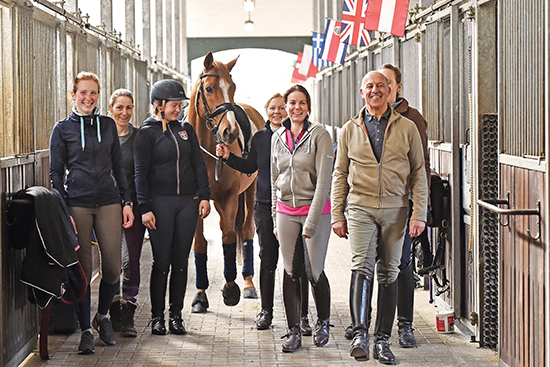
Do you use psychologists?
“We have a team psychologist, but quite a number of our riders have their own person who they can talk with and strengthen the mental side. We are getting more and more professional when it comes to the rider, I think that was a weakness in the former time, everything depended on the horse – but nowadays the rider is an athlete and much more involved.”
I don’t think Bubi Gunther would have passed a fitness test…
“That was a different time. You hardly see an over-weight rider these days in international sport. As riders we are much more conscious of ourselves as athletes.”
You were talking about how the horses have changed, are they easier to ride now?
“They are definitely more sensitive. When I go back in my youth, the horses were often in a way, more simple. We used to ride Warmbloods, rather calm, not so nervous or complicated – nowadays the horses are much more sensitive, and physically they are much lighter. Formerly our Warmbloods were heavier horses, with enormous mechanics, but difficult to collect, to shorten – now the modern horse offers you as a rider much more if you can handle these sometimes hyper and over-active horses – these are the horses that I like a lot. That was always what I was looking for because I came out of eventing, so I was always looking for a sharp horse.”
“But these horses also require better riding, and it is part of our training system that we work a lot with the riders, with the position, with balance, with straightness – straightness in the rider but also straightness in the horses. As an example, if you saw me training with Jessica in Aachen, I took away the stirrups – which we always did in training – but just to give her a little better feeling for herself. I see a lot of good horse / rider combinations, not just in Germany but also internationally, where you can see if there were a little bit more harmony between the horse and rider, it could be a much better result. That is one of my big things, to bring the horse and rider much better together with a finer, more discreet way of riding.”
What do you have to do to move from bronze to gold by Rio?
“We will go on with the training, there is not a lot more to do. I think we have already good horses, and some nice horses coming up that have done already Grand Prix. Dorothee Schneider has two very nice horses, that have already won at international Grand Prix level. There are some new horses coming. I am very positive. We just have to work very hard, be very disciplined, and if everything goes right, the form on the day will decide the rankings. I personally like it that the nations are rather close together, that makes everyone ride and train better. It was not good for the sport when Germany used to win every time, now it is open, you go to a championship and there are three or four nations, sometimes five, which are going for a medal. And that is very good.”
This article first appeared in the January 2016 issue of THM.




